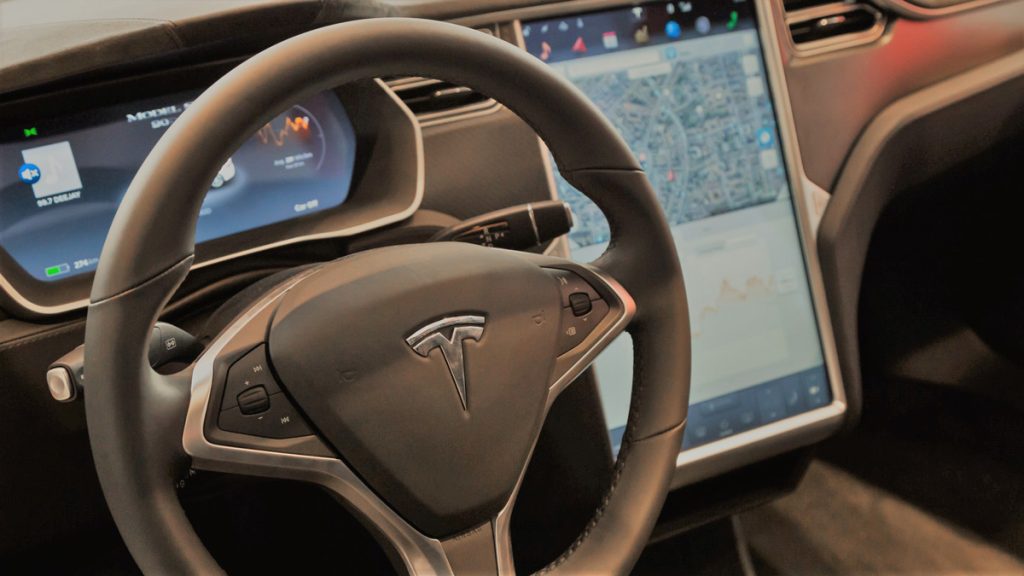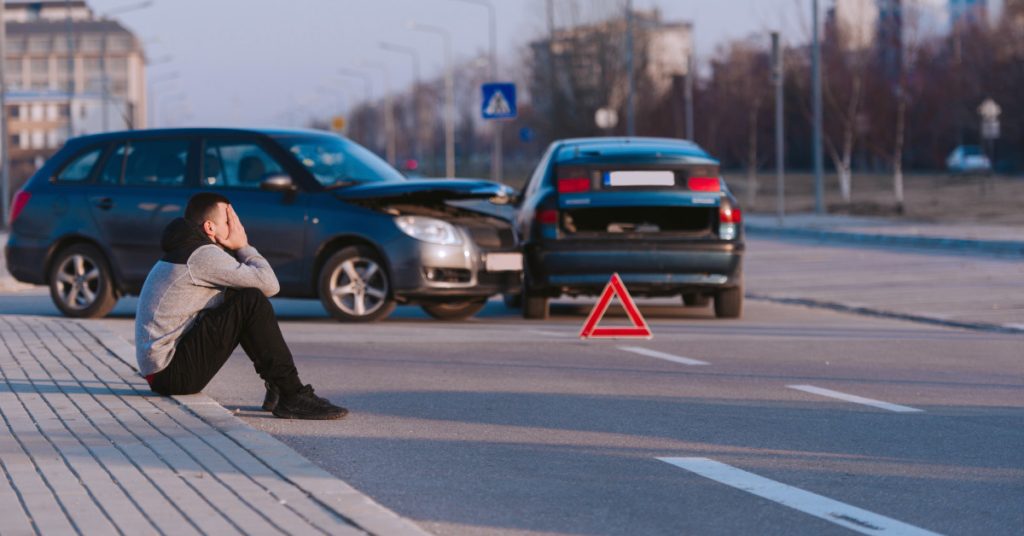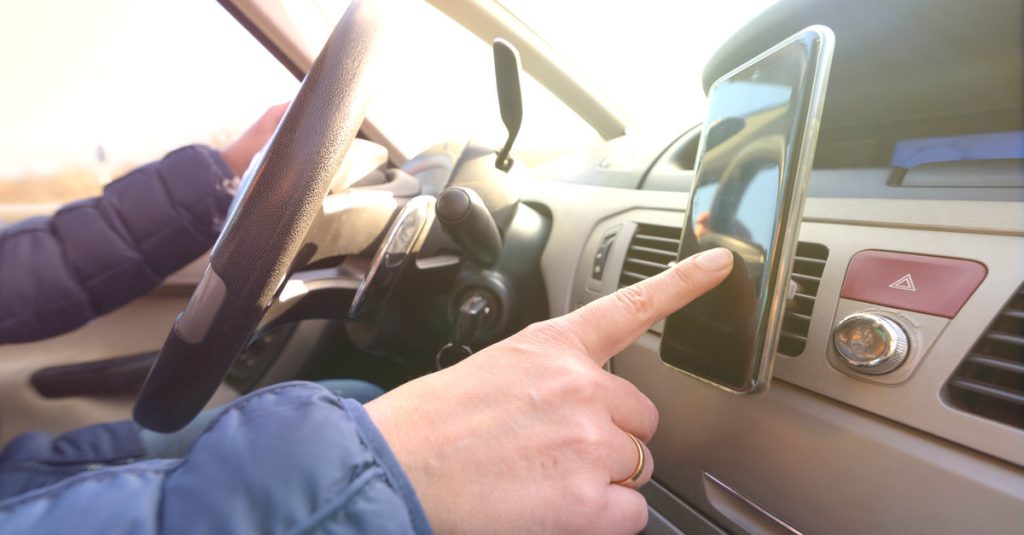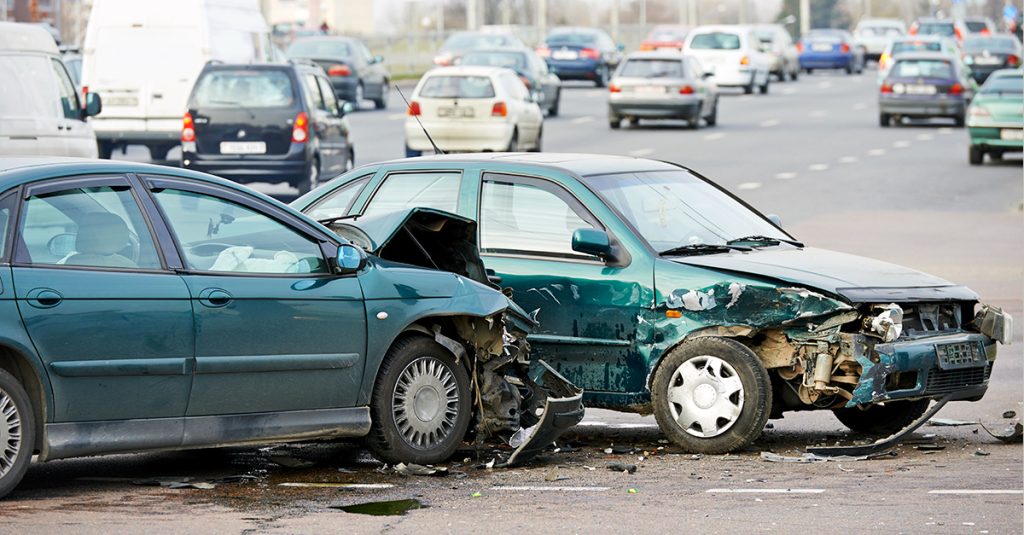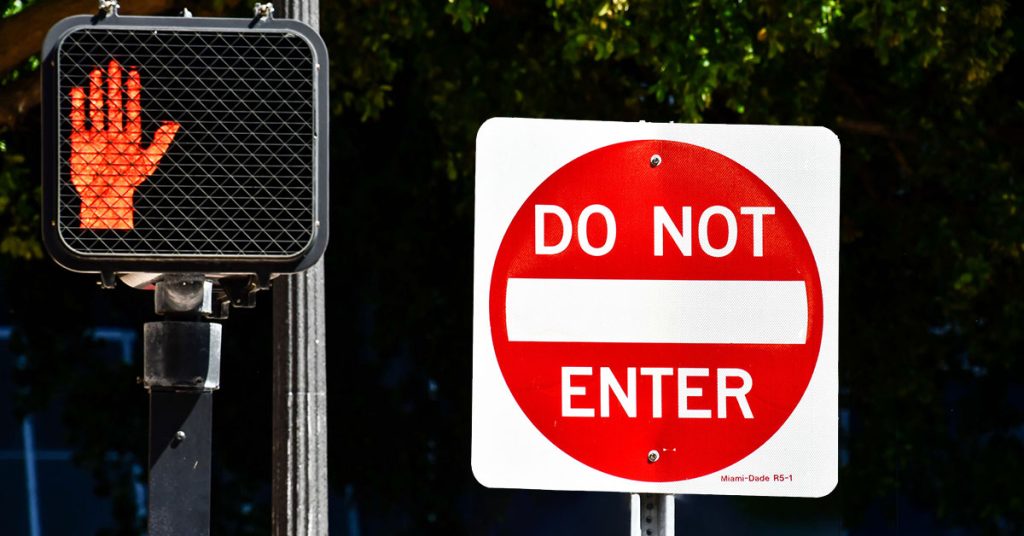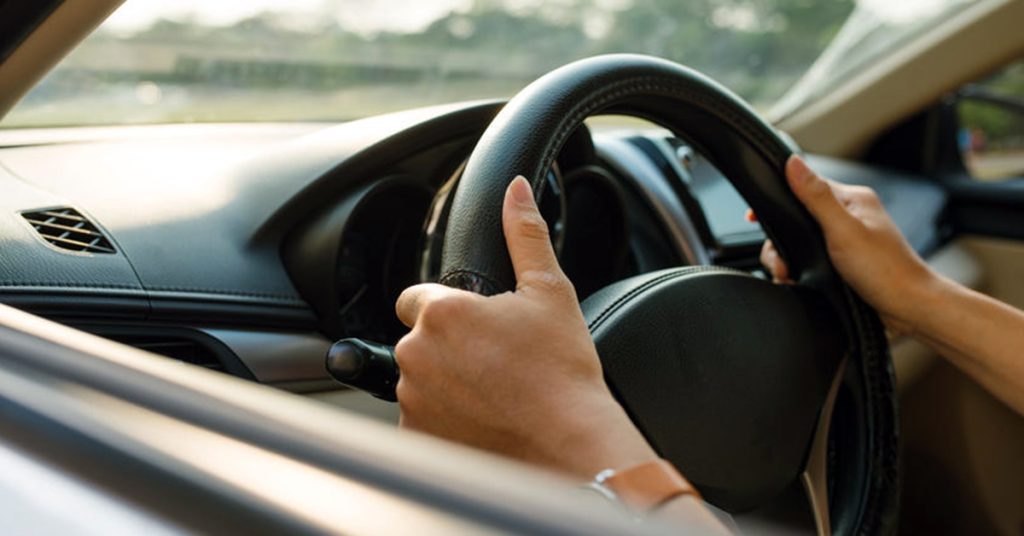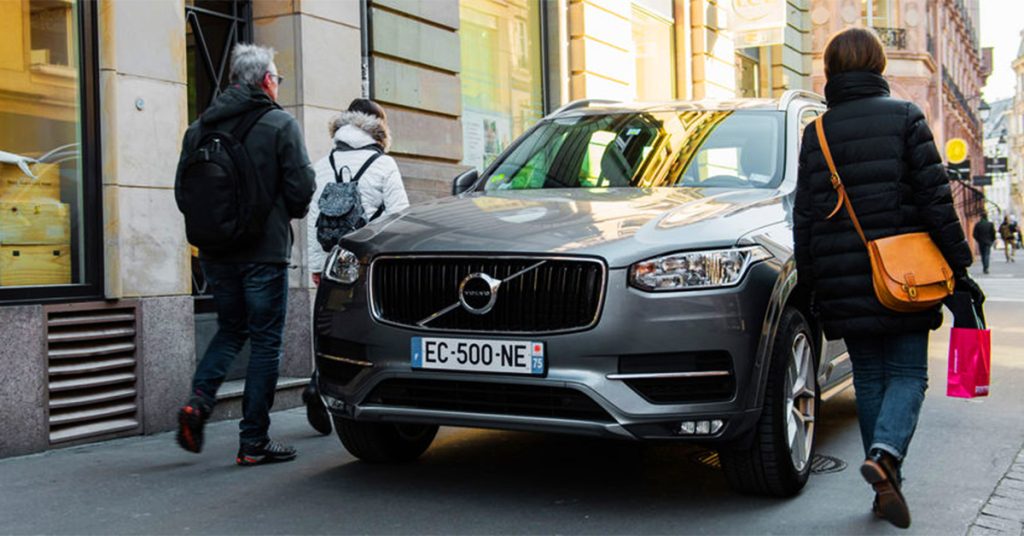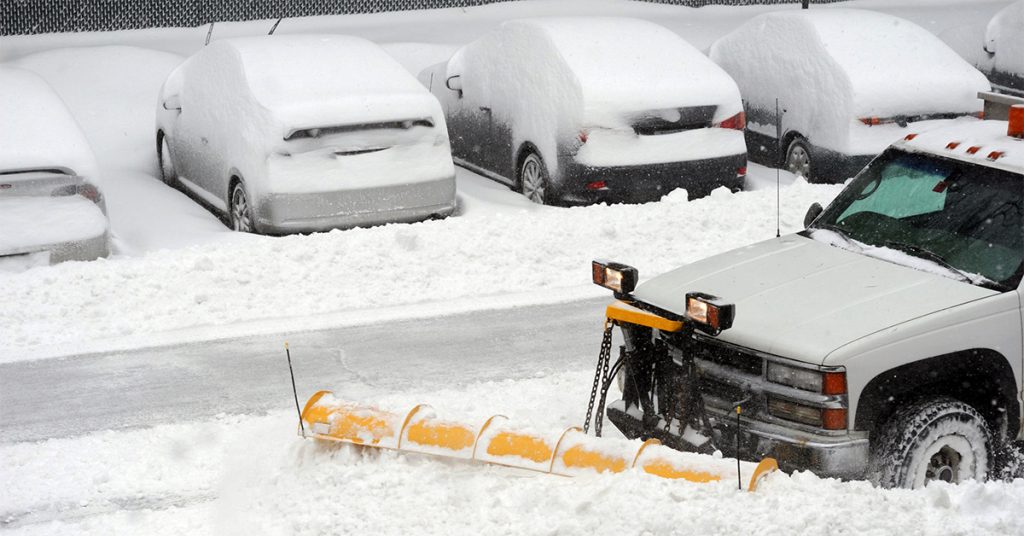Posts Tagged ‘“Boston car accident lawyers”’
Tesla Has Highest Number of Crashes Involving Self-Driving Cars, Driver-Assist Systems, New Data Shows

New data shows self-driving cars and driver-assisted systems were involved in hundreds of car accidents over a 10-month period. Tesla vehicles were tied to 70 percent of these car crashes.
Days after expanding its Tesla safety investigation, the federal government has released 10 months of data showing nearly 400 crashes involving self-driving and driver-assisted vehicles, according to The New York Times. Tesla vehicles were involved in 70 percent of the self-driving and driver-assisted crashes.
Of 392 crashes, 273 involved Tesla vehicles operating with Autopilot, Full Self Driving or related features, according to the National Highway Traffic Safety Administration (NHTSA). Six people were killed while others were injured. The crashes ranged from serious collisions to fender benders or smaller incidents.
- Honda vehicles were involved in 90 incidents.
- Waymo, a driverless taxi service in Arizona, was involved in 62 crashes. The service is owned by Google’s parent company.
- The G.M. Cruise taxi service was linked to 23 accidents in the San Francisco area.
- Subaru reported 10 crashes; Ford, G.M., BMW, Volkswagen, Toyota and Porsche each reported 5 or fewer.
Last year, the NHTSA issued an order requiring automakers to report car accidents involving vehicles with driver-assist systems or fully-automated vehicles being tested on public roads. This is the first data release under the order and an NHTSA official cautioned the public not to make conclusions yet.
The data covers just 10 months, but provides no context on the total number of vehicles each manufacturer has on the road with automated technologies.
Tesla has about 830,000 vehicles with driver-assisted technologies on the road, according to The New York Times. But other companies, such as Ford and GM, also have technologies that allow hands-free driving in certain situations. They have sold fewer models.
In addition, automakers have long sold cars, trucks and SUVs with some level of driver-assist systems, such as cruise control or automatic braking when traffic ahead slows. With this data release, the NHTSA said it plans to keep collecting data on auto crashes involving these features and technologies, as a guide for future safety requirements.
NHTSA Expands Investigation of Tesla Autopilot Feature
The data comes as the NHTSA investigates years of car crash reports involving Tesla’s Autopilot feature. On June 9, the agency announced it was expanding the probe to include all four Tesla cars – Model S, Model X, Model 3 and Model Y – from 2014 and 2021, according to The New York Times.
The agency said it was upgrading its preliminary evaluation to an engineering analysis, a step required before a safety recall, according to The New York Times. The NHTSA has set a one-year timetable for the review.
The Texas-based company designs the world’s most popular luxury vehicles, many of which use the Autopilot technology to perform key aspects of driving, such as steering, accelerating and braking automatically within the lane. The NHTSA is investigating whether the Autopilot fails to prevent drivers from diverting their attention from the road and engaging in other unsafe behaviors.
This wouldn’t be the first Tesla recall. In November 2021, Tesla recalled almost 12,000 vehicles from its Full Self Driving beta test. This was a version of Autopilot designed for city driving. The company reported a software update could unexpectedly activate a vehicle’s emergency brakes.
Tesla Self-Driving Crash and Sleeping Driver Report in Massachusetts
Tesla crashes have made headlines across the country.
There was a bizarre story on the sleeping driver traveling in a Tesla vehicle on the MassPike back in 2019. A driver captured video of another driver and his passenger traveling in a Tesla vehicle in the next lane. Both were in a heavy sleep.
State Police called the behavior “extremely dangerous” and said the driver would be subject to criminal charges if they ever identified and located him. That never happened.
But State Police caught the driver in a Tesla self-driving crash in West Bridgewater in 2020.
According to news reports, a state trooper pulled over a college student in an SUV on Route 24 in West Bridgewater. A Tesla driver slammed into the trooper’s cruiser, then hit the 21-year-old’s vehicle as she reached for her registration. The driver was reportedly operating in Tesla’s Autopilot mode, according to a NBC Boston report. He was charged with negligent operation.
Free Legal Consultation – Boston Car Accident Lawyers
Breakstone, White & Gluck has over 125 years of combined experience successfully obtaining record recoveries for clients injured by negligent driving. Our attorneys are experienced in handling cases involving car accidents and commercial truck crashes across Massachusetts. We represent clients at all stages of motor vehicle accident cases, from insurance claims through to trial and appeal, if necessary.
For a free legal consultation, call 800-379-1244 or 617-723-7676 or use our contact form.
U.S. Traffic Deaths Reached a 16-Year High in 2021, Early Estimates Show
 Traffic fatalities rose dramatically last year as we worked to emerge from COVID-19. The National Highway Traffic Safety Administration (NHTSA) has released early estimates showing 42,915 people died in motor vehicle crashes in 2021, up 10.5 percent from 2020. In Massachusetts, early estimates show a 20 percent increase.
Traffic fatalities rose dramatically last year as we worked to emerge from COVID-19. The National Highway Traffic Safety Administration (NHTSA) has released early estimates showing 42,915 people died in motor vehicle crashes in 2021, up 10.5 percent from 2020. In Massachusetts, early estimates show a 20 percent increase.
There were more vehicles on the road last year. The NHTSA reported an 11 percent increase in vehicle miles traveled in 2021 compared to 2020. There was only a slight decline in the fatality rate per mile traveled.
But the projection shows the highest number of traffic fatalities since 2005 – and the largest annual increase in traffic deaths since 1975, when the federal traffic data system began. Across the board, drivers, pedestrians, bicyclists and motorcyclists all faced more treacherous conditions than before the pandemic, even as many traveled less.
Rise in Pedestrian and Bicycle Fatalities
Many of us have been walking more since the pandemic began. It’s nice to just step outside and start getting some exercise. However, the walk can be very dangerous. Traffic may look lighter at times. Open roads seem to encourage drivers to speed and traffic patterns are still highly irregular.
Nationwide, pedestrian traffic deaths increased 13 percent in 2021, while fatal bicycle accidents climbed 5 percent. There was also a 9 percent increase in motorcycle accident fatalities.
Speed-Related Crashes Up 5 Percent
The NHTSA reports a 5 percent rise in traffic fatalities caused by speed-related crashes in 2021. This follows a dangerous 17 percent jump from 2019 to 2020. Overall, speeding is responsible for more fatal crashes now than before the pandemic.
There were also more fatalities in multi-vehicle crashes last year, as vehicles traveled more miles. These fatalities climbed 16 percent in 2021. There was a rise from March to August 2021, then November to December. April 2021 saw the greatest increase in fatalities in multi-vehicle crashes.
Alcohol-Related Crashes Rise
One of the most troubling trends of the pandemic was the rise in drunk driving and injuries. In 2020, there was a 16 percent rise in traffic fatalities stemming from police-reported, alcohol-involvement crashes. This came as workers and students stayed home. In 2021, this trend continued, with an estimated 5 percent increase in these crashes.
More Traffic Deaths Among Seniors
There were fewer traffic fatalities among older Americans in 2020 as more people stayed home or suffered from COVID-19. But last year, as senior citizens (those 65 and older) got back out, there was a 14 percent increase among traffic fatalities.
13 Percent Increase in Traffic Fatalities Involving at Least One Large Truck
In 2021, there was a 13 percent increase in fatalities in crashes involving at least one large truck (one with a gross vehicle weight rating of more than 10,000 lbs). The NHTSA counts both commercial and non-commercial vehicles.
Trucking activity has drastically changed since the start of the pandemic. More of us are ordering groceries, clothing and household supplies from the convenience of our homes and we may see large trucks and delivery vans several times a day.
The NHTSA reports traffic fatalities in crashes involving at least one large truck increased from April to July 2021 and then again from November to December 2021.
Free Legal Consultation – Boston Car Accident Lawyers
Founded in 1992, Breakstone, White & Gluck has been consistently recognized for our results for our clients. Our personal injury attorneys provide experienced and aggressive representation to those injured in car accidents, pedestrian accidents and motorcycle crashes across Massachusetts.
If you or a loved one have been injured by another driver’s negligence, learn your legal rights for seeking compensation for your recovery. For a free legal consultation, contact Breakstone, White & Gluck and at 800-379-1244 or 617-723-7676 or use our contact form.
Proposal to Strengthen Massachusetts Hands-Free Driving Law By Adding Ban on Recording and Broadcasting While Driving
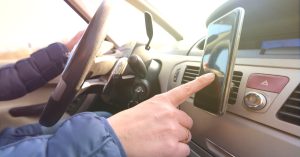
Drivers are not allowed to pick up cell phones under the Massachusetts hands-free driving law, but can quickly tap the device for activation of hands-free mode or GPS.
A dangerous trend has emerged on our roads, cell phones and social media accounts, with the rise of drivers “vlogging,” live-streaming and making video phone calls. In a 2020 survey, more than 20 percent of drivers admitted to recording video on cell phones. This is more than double the response from 2015.
Now, after a cyclist’s tragic death, a local lawmaker is proposing Massachusetts update its hands-free driving law to ban both recording and broadcasting video while driving.
Nationwide, 48 states have banned texting while driving and 24 states have passed hands-free driving laws, according to the Governors Highway Safety Association.
Massachusetts would join four other states which have banned recording and broadcasting as part of their hands-free laws, according to state Sen. Jo Comerford, D-Northampton, who has proposed the legislation.
Sen. Comerford proposed “Charlie’s Law” in the wake of a cyclist’s death near Northampton High School in October 2021. A 23-year-old driver is accused of video chatting on the FaceTime app, then running past a stop sign and striking the cyclist in a fatal bike crash, according to local news reports. The driver now faces criminal charges, including negligent motor vehicle homicide. Meanwhile, state lawmakers held the first hearing on Charlie’s Law earlier this month.
Background on Massachusetts Distracted Driving Laws
Looking to prevent injuries and deaths in car accidents, Massachusetts passed a ban on texting while driving in 2010. After many years of debate, lawmakers reached agreement on a more comprehensive hands-free driving law in 2019.
The Massachusetts hands-free driving law took effect in early 2020 and drivers now face fines for violations, starting with $100 for the first offense.
For third and subsequent offenses, drivers face up to $500 in fines and an insurance surcharge. They must also attend a distracted driving education program.
Under the hands-free law, drivers are only allowed to touch mobile phones and electronic devices to quickly activate hands-free mode, when devices are mounted to a windshield, dashboard or center console. Drivers are still allowed to use voice-to-text commands and make phone calls so long as cell phones are properly mounted.
As it stands, the Massachusetts hands-free driving law does not specifically ban drivers from making video conference calls or vlogging activities, such as recording or live broadcasting video of one’s self while driving to post on social media sites. As long as cell phones are mounted, drivers are not violating the law.
Drivers may be cited or charged if police investigate a car crash and find they violated another traffic law, such as a marked lanes violation. But updating the hands-free law – which is a primary enforcement law – may allow police to stop and cite drivers they see using cell phone video features before a crash happens.
Sen. Comerford has proposed S. 2733, “An Act Prohibiting Video Recording or Broadcasting While Driving.” The bill proposes adding language to the existing law stating no operator shall record or broadcast video of themselves on a mobile device, with a few exceptions.
- Drivers would still be allowed to record or broadcast video in an “emergency or exigent circumstance” or “when it is so clearly in the public interest as to override the public safety purpose of this sentence.”
- Dash cams can still be used to record traffic conditions or passengers in a vehicle, but they must be mounted. This allows commercial drivers, Uber and Lyft drivers to continue recording passenger behavior.
More Than Twice As Many Drivers Admitted to Recording While Driving in 2020
In its 2021 Driving While Distracted study, State Farm Auto Insurance reported 22 percent of drivers admitted to recording behind the wheel in 2020, compared to 10 percent in 2015.
Younger drivers were more likely to engage in this behavior:
- Nearly half – 44 percent – of drivers in the 18 to 29-year-old demographic admitted to recording video while driving.
- More than a third of drivers age 30 to 39 admitted the same.
This was not the only increase. State Farm reported 89 percent of drivers – or nearly 9 out of 10 – admitted to engaging in one of the 14 distracted driving behaviors covered in its online survey.
One troubling note was most drivers in states which had passed hands-free driving said they were aware of laws, but one in five were not informed. Six percent of the drivers even said their state did not ban handheld cell phone use.
Contact Breakstone, White & Gluck For a Free Legal Consultation – Boston Personal Injury and Car Accident Attorneys
At Breakstone, White & Gluck, our Boston personal injury lawyers offer more than 100 years combined experience representing those injured by negligent and reckless driving. Our attorneys work with clients throughout the Boston area, including those who live and work in Boston, Cambridge, Somerville, Everett, Brookline, Arlington and Quincy.
If you have been injured in a car accident caused by another driver’s negligence, you may require medical care and have to miss time at work. You may have many questions. For a free legal consultation, contact Breakstone, White & Gluck at 800-379-1244 or use our contact form. Our attorneys will review the facts of your case with you and help you determine whether you have a potential claim.
Driver Beware When Approaching These High Crash Intersections in Massachusetts
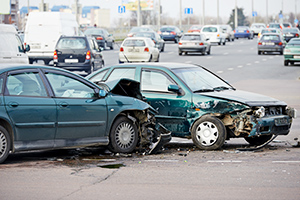
Read and find out if you travel through one of the top crash locations in Massachus
While drivers have a duty to operate with reasonable care and follow traffic laws, it is also worth noting the road you are traveling on. In Massachusetts, certain intersections have a track record of more car accidents than others.
Which intersections? In its most recent report, the Massachusetts Department of Transportation (MassDOT) shared the top 200 crash locations across the state. Released in September 2020, MassDOT’s 2017 Top Crash Locations Report offers insights as drivers plan their summer travel and resume commuting.
The rankings are based on reports to the Registry of Motor Vehicles’ Crash Data System from 2015-2017. A weighted methodology was used to compile the list.
Here are the top 10 car crash locations in Massachusetts:
- VFW Highway at Bridge Street, Lowell
- Randolph Avenue at Chickatwabut Road, Milton
- Morton Street at Harvard Street, Boston
- Ash Street and West Elm Street, Brockton
- Appleton Street at Central Street, Lowell
- Pleasant Street at Lincoln Street, Stoughton
- Main Street at Plainfield Street, Springfield
- High Street at Cabot Street, Holyoke
- Broadway at Third Street, Chelsea
- Saint James Avenue at Saint James Boulevard, Springfield
Several communities had multiple intersections on the list. Lowell has four of the top 25.
Top Crash Locations in Lowell
Two of the highest-ranked intersections were on the VFW Highway along the Merrimack River in Lowell. The VFW Highway at Bridge Street was named the top crash location statewide. The VFW Highway and Mammath Road ranked 22nd.
Also in Lowell, Appleton Street at Central Street and School Street at Branch Street appeared among the top 25 motor vehicle crash areas.
Brockton Top Crash Locations
MassDOT listed 31 Brockton intersections among the top 200 crash locations. The five top crash locations in Brockton:
4) Ash Street and West Elm Street, Brockton
15) Court Street at Montello Street, Brockton
23) Forest Avenue at Bouve Avenue, Brockton
24) Main Street at Nilsson Street, Brockton
25) Warren Avenue at Father Kenney Way, Brockton
One of the top crash locations was the area of North Quincy and Chestnut Streets on the Abington and Brockton border. Nearby, two Randolph intersections along Route 28 appeared on the list. At 41 was the intersection of South Main Street and Union Street. North Main Street and Scanlon Drive ranked 126 (this finished in the same position as six other intersections in Brockton, Lowell, Cambridge and two locations in Worcester).
Can You Change Your Commute to Avoid High Crash Locations?
Every driver wants to avoid a car crash. Apps such as Google Directions and Waze can offer valuable insights about traffic volumes. But we encourage you to look through the full MassDOT list of top crash locations.
If you travel through one of these intersections, consider why there are so many auto accidents. Some roads have high traffic volumes, especially during commuting hours. With more drivers, you may see more unsafe maneuvers, such as talking on a cell phone, speeding or failure to yield. Other roads have become large truck routes or are just aging, with outdated traffic infrastructure or poor lighting.
If you can, try to avoid these intersections or adjust your commute to avoid peak traffic. If you must travel these areas, pay attention and consider safety, near other vehicles as well as other pedestrians and cyclists. And watch for change. If you search online, you may find some of these intersections are scheduled for re-construction in the near future.
Free Legal Consultation – Contact Our Boston Car Accident Lawyers
Breakstone, White & Gluck offers our clients more than 100 years combined experience in handling car accidents, truck crashes and other motor vehicle collisions. Clients turn to us for our experience, expertise and our commitment to achieving the best result in every case. Read about our past results for clients in personal injury cases.
If you have been injured by another driver, learn your legal rights for seeking compensation. For a free legal consultation, contact our car accident attorneys at 800-379-1244 or 617-723-7676 or use our contact form.
As Wrong-Way Crashes Rise, Drunk Driving is the Leading Cause, But a Driver’s Age and Driving Alone May Also Contribute
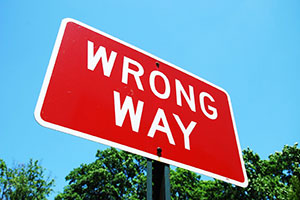
Wrong-way crashes are on a dangerous rise in Massachusetts and across the U.S., according to the AAA Foundation for Traffic Safety.
No one ever wants to hear the phrase “wrong-way crash.” But head-on collisions are frequent and often fatal on Massachusetts highways.
A new traffic analysis reveals the number of wrong-way crashes is rising on divided highways across the U.S. The majority of these auto crashes involve an alcohol-impaired operator. Drivers are exceeding the legal limit in 6 of 10 wrong-way car crashes, according to the AAA Foundation for Traffic Safety.
Drunk driving is the leading cause. Yet researchers say other factors, including a driver’s age and driving without a passenger, contribute. For example, 87 percent of wrong-way drivers travel alone. Passengers can be a resource for drivers, giving them an extra set of eyes to catch potential mistakes.
As for older drivers, those between 75 and 79 drive fewer miles and spend less time driving than younger operators. Still, they are more likely to be involved in a wrong-way crash and states are being urged to review how they identify medically at-risk drivers.
How Many Wrong-Way Crashes Are There in Massachusetts Each Year?
In Massachusetts, MassDOT data shows 150 people have died and more than 4,500 have been injured in wrong-way car accidents since 2010, according to CBSBoston.com. Since 2010, there have been 8,200 wrong-way crashes.
Nationwide, wrong-way accidents caused an average of approximately 500 deaths per year from 2015 – 2018, according to AAA. This represents a 34 percent increase from 2010 – 2014.
According to the CBSBoston.com report, the numbers also climbed in Massachusetts, from 19 to 27 deaths on average annually for the same period, a 78 percent increase.
Worcester recorded 366 wrong-way crashes, more than any other community in Massachusetts, followed by Springfield and Boston.
Wrong-Way Crashes Can Also Happen at Local Intersections
The AAA report focuses on wrong-way crashes on divided highways. Drivers can also make dangerous maneuvers resulting in wrong-way accidents at local intersections. From 2015-2018, the Federal Highway Administration reported roughly 400-450 wrong-way crashes at intersections.
Crashes may not be reported the same way at intersections, which have different traffic conditions, speeds and signage. When there is a wrong-way crash, the driver may be cited for another infraction, such as a marked lanes violation or failure to stop for a traffic signal.
But if you have been seriously injured at an intersection with a “Do Not Enter-Wrong Way” sign, it is in your best interest to consult an experienced car accident attorney who can thoroughly investigate the cause of a collision and your injury. An attorney can help you secure evidence promptly and with every aspect of your claim should you need to seek compensation from an at-fault driver’s insurance policy.
Strengthening Traffic Laws to Reduce Wrong-Way Crashes
The AAA Foundation for Traffic Safety and the National Transportation Safety Board are working to educate drivers about taking safety precautions to avoid wrong-way crashes and head-on traffic crashes. The most fundamental step is not to drink and drive.
The organizations also support passage of safety laws and infrastructure improvements, including more visible traffic signs.
Ignition-interlock laws are part of this effort and all eyes are on Massachusetts. We are the only state which does not require drivers with a first-time OUI conviction to utilize ignition interlocks, which test one’s blood alcohol concentration before they start driving.
However, after years of unsuccessful debate, Massachusetts may finally be moving closer. Last December, Gov. Charlie Baker signed an amendment to the state budget which if passed, will make ignition interlocks mandatory for all drivers convicted of operating under the influence. This could make a meaningful difference in discouraging choices that lead to drunk driving crashes and very serious injuries across Massachusetts.
Tips for Driving Safely on Highways
Do Not Drink and Drive. Never consume alcohol – or marijuana or other drugs – then drive. Use the designated driver system if you plan to go out and consume alcohol. Drivers have the same responsibility when using prescription medications which carry safety warnings about driving. If you have a question, consult your doctor on when and how you should use your medication.
Stay Alert. Do not drive if you are drowsy or fatigued. If you find yourself too tired to drive, stop your vehicle and come up with a short-term plan for getting some rest or grabbing a cup of coffee. There is always an alternative, including Uber or Lyft. Drivers often want just to push through and reach their destination. But if your vision is blurry or you cannot focus, you are driving negligently and putting others in harm’s way.
Drive with a Friend. You can split up the driving responsibilities, which will reduce your fatigue.
Avoid Distracted Driving. Reaching for a cell phone is the cause of many auto accidents. You are not using reasonable care to drive safely if you attempt to make a phone call while traveling through highway traffic, among other cars, SUVs and large trucks.
While Massachusetts has a hands-free driving law and drivers are legally allowed to make phone calls with Bluetooth devices, the safest approach is to still look for a rest stop or exit and safely park your vehicle before using your phone.
Create a Family Support System. Families can support each other in getting home safely. Try to develop a network of friends and loved ones who will support you. Ask them in advance if they would be willing to come pick you up if you ever needed a ride. Be willing to do the same for them.
Help Older Drivers Plan. Be proactive. Take time to discuss transportation options with the older driver in your life. If they drive, help them plan the best times of day to travel and steer them away from the highway. Remind them the importance of having a regular eye exam.
Let them know they have support. Make a schedule for your loved one to get out several times a week with you, other family members, grandchildren or a Council on Aging.
Free Legal Consultation – Call Our Boston Auto Accident Lawyers
With more than 100 years combined experience, Breakstone, White & Gluck specializes in representing those who have suffered serious personal injury or wrongful death due to negligence. We are based at 2 Central Plaza in downtown Boston.
With expertise in Massachusetts insurance laws and traffic accident investigations, our attorneys are here to guide clients through the difficulties you face after a serious accident. For a free legal consultation, contact Breakstone, White & Gluck and our car accident lawyers at 800-379-1244 or 617-723-7676 or use our contact form.
Watch for Savings, But Keep Paying Your Massachusetts Auto Insurance Premiums During the Pandemic
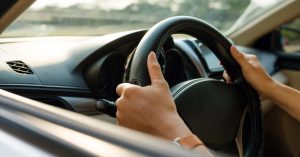 It has been nearly a year since Massachusetts called the COVID-19 state of emergency. Your daily routine has completely changed and you are not driving very often. Do you still need to buy auto insurance at this point?
It has been nearly a year since Massachusetts called the COVID-19 state of emergency. Your daily routine has completely changed and you are not driving very often. Do you still need to buy auto insurance at this point?
Yes. Under state law, you are required to purchase a Massachusetts auto insurance policy if you have a driver’s license and register a vehicle. If you cause a car accident in Massachusetts, you are responsible for compensating anyone you have injured for their medical expenses and other financial losses. You also have to pay for property damage.
Auto insurers granted Massachusetts drivers some discounts last year, but lawmakers and consumer advocates are starting to raise the question of further discounts.
Calls for Action on Reducing Auto Insurance Premiums in Massachusetts
On Feb. 12th, the Lawrence-Eagle Tribune reported state Sen. Barry Finegold, D-Andover, and other legislators have asked the state Division of Insurance to review insurance rates, premiums and losses. They also want insurers to offer refunds from profits.
Attorney General Maura Healey’s office also recently asked regulators to reduce personal automobile insurance premiums by at least 25 percent, according to the newspaper. Her office cited data showing the frequency of liability coverage claims fell more than 50 percent between 2019 and 2020. There was a 70 percent drop in the frequency of collision coverage claims.
Our Massachusetts Auto Insurance Tips During COVID-19
Purchase the Minimum Auto Insurance
Under Massachusetts law, you have to purchase the required minimum coverage limits. There has been no change to the coverage limits during COVID-19.
- Bodily Injury to Others, $20,000 per person; $40,000 per accident
- Personal Injury Protection (PIP), $8,000 per person, per accident
- Bodily Injury Caused by an Uninsured Auto, $20,000 per person; $40,000 per accident
- Damage to Someone Else’s Property, $5,000 per accident
These are low coverage limits. In most cases, drivers should purchase more to adequately protect themselves and others if they cause a car accident. The key with auto insurance is you must purchase the right amounts and coverage types to protect yourself. Learn more about the different coverages in our article, “Understanding and Buying Massachusetts Car Accident Insurance.”
How Auto Insurance Protects You
Right now, you may be asking why you need to buy an auto insurance policy at all. This is a good time to remind you of all the ways your policy can work for you. Most drivers can appreciate that they are required to purchase auto insurance under Massachusetts law. At the very least, under M.G.L. c. 90, § 34J, you may face a fine between $500 to $5,000 if you are caught operating without insurance. Most drivers can also appreciate that auto insurance can protect them financially if they make a mistake and cause someone injury in a car crash.
But there are other protections. First, you may need your auto insurance to protect yourself. Even if another driver was at fault in a car crash, you may have to file a claim with your own policy for your medical expenses and lost wages. This would be true if you were injured by an uninsured or underinsured driver. This would also be the case if you were injured in a hit-and-run accident and could not identify the driver.
If you are a cyclist, you may be entitled to pursue a claim against another driver for your injuries in a bicycle accident. However, having your own auto insurance policy can provide necessary resources to help you recover, especially if the driver does not have auto insurance.
Another benefit is auto insurance can protect our loved ones or those living in our household. Call your insurance agent and ask to add these licensed drivers to your policy. They may be able to draw on the coverage should they ever be injured in a car crash or a bicycle accident and not have coverage elsewhere.
Keep Massachusetts Auto Insurance Payments Current
It is fine to evaluate your auto insurance. But do not withhold or miss an auto insurance premium payment or you could risk your insurer cancelling your policy. If you are facing financial hardship, one option is you can set up a payment plan over the year. In doing so, you may be losing a pre-payment discount, but it may be the best approach for your situation right now.
Before you call your insurer or insurance agent, learn as much as you can. Read the state advisory on Motor Vehicle Insurance Installment Payment Plans.
Seek Quotes from Massachusetts Insurance Agents
In Massachusetts, you can purchase insurance directly through an insurer or an insurance agent. Call and ask if you qualify for any discounts based on your current driving routine, vehicle, employer or group memberships. At a minimum, insurers should offer a discount for traveling more than 5,000 miles in a year.
It is usually worth requesting quotes from more than one insurance agent or companies. In Massachusetts, some insurance agents can offer quotes from multiple companies. Expect most to represent just a single company. Here is the state of Massachusetts insurance agent database.
Check for Discounts and Savings
The best types of discounts and savings are those you achieve just by checking in with your auto insurance agent. For instance, you may be eligible for a discount because you logged fewer than 5,000 miles on your car in 2020.
In some cases, this conversation may not result in savings. You may need to add someone to your household policy or purchase business coverage because you started using your vehicle for work. Whatever your situation, you have a responsibility to keep your auto insurer updated so you have proper coverage should you need it. Many people put their auto insurance coverage at risk without even realizing it when they move and start garaging their vehicle in a new location. Your auto insurance is calculated in part based on where you garage your vehicle. College students who take their vehicles to campus also need to update auto insurers.
Where to Learn More About Massachusetts Auto Insurance
We mentioned a few of our auto insurance articles in this blog. We also invite you to read our other auto insurance articles, including “What Every Massachusetts Bicyclist Needs to Know About Car Insurance” and “Massachusetts Motorcyclists: Buy the Right Types of Auto Insurance to Protect Yourself and Your Finances.”
Free Legal Consultation – Boston Car Accident Attorney
At Breakstone, White & Gluck, our Boston car accident lawyers are known for our commitment to pursuing the best financial result for clients. If you have been injured by someone else’s negligent driving, you may be entitled to seek compensation for your injuries. We represent clients throughout Massachusetts, including in Boston, Quincy, Cambridge, Somerville, Everett, Brookline and Arlington.
For a free legal consultation, contact our attorneys at 800-379-1244 or 617-723-7676 or use our contact form.
For Pedestrians, SUVs are Deadlier than Cars
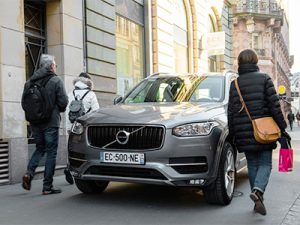
A new IIHS study found SUVs crashes caused more severe injuries to pedestrians than cars.
During the pandemic, pedestrians have outnumbered vehicles on the roads at times. If you look closely, you may see mostly large vehicles left behind, including commercial trucks, package delivery vans and SUVs.
Today, our Boston personal injury lawyers are writing about SUVs and pedestrians. Amid the pandemic, an important study was published by the Insurance Institute for Highway Safety (IIHS), finding SUVs (or sports utility vehicles) cause more serious pedestrian injuries than cars. Researchers concluded automakers need to make design changes to protect pedestrians from increased fatalities.
Highlights from the 2020 study and report:
Drop in overall crashes. Overall, motor vehicle accident fatalities have dropped from more than 50,000 in 1980 to 36,560 in 2018.
Rise in pedestrian crashes. Meanwhile, one in five traffic crashes is now a pedestrian fatality. Pedestrians are more at risk now. The number of pedestrians hit by all vehicles rose a dramatic 53 percent from 2009 to 2018.
Study data. The study reviewed a sample of 79 crashes in Michigan, finding that SUVs caused more serious injuries to pedestrians than cars.
Speed. Below 20 mph, there was not a significant difference in the injuries caused by SUVs and cars.
More danger at higher speeds. When SUVs traveled 20 to 39 mph, 3 out of 10 SUV crashes ended in a pedestrian death. In comparison, 5 out of 22 cars caused a pedestrian fatality.
Over 40 mph was most deadly. At 40 mph, all three SUV crashes resulted in pedestrian fatalities. This is 100 percent compared to 54 percent of cars (7 out of 13).
Previous Research
The IIHS has led several studies on SUVs and the dangers to pedestrians. One past study found that as pedestrian accidents overall have increased, many involve cars, but there was an 81 percent increase in SUVs causing fatal pedestrian accidents between 2009 and 2016.
There are more SUVs on the roads than ever, making it important to address the safety hazards to pedestrians. SUVs first outsold sedans in 2015, according to The New York Times. They continue to be the vehicle of choice for many Americans. In fact, SUVs accounted for up to 47.4 percent of all U.S. auto sales, according to an analyst quoted by the newspaper.
SUV Designs Are Now Being Made Safer for Drivers
What is notable about SUVs is manufacturers have already spent years adopting more “carlike designs” to protect SUV vehicle occupants. Manufacturers have lowered SUV bumpers and other features to align better with cars. The danger to pedestrians has not been addressed the same way.
According to the IIHS, SUVs can endanger pedestrians because of the overall shape of their front end. On many SUVs, the front end is solid and can have a double impact, striking the pedestrian at the pelvis or chest, just after the bumper hits the person’s lower body.
The IIHS now plans to look into the types of SUVs which caused injury in the Michigan study. Meanwhile, in Europe, manufacturers have already started to make use of safety features, such as pedestrian airbags.
A Note for SUV Drivers
Many of us own SUVs. If you purchase one in the future, be aware of the ongoing safety research and read about the specific features on the model you wish to purchase. You may have bought one 10 years ago and find this year’s model is not right for your family and where you live and work.
We suggest you check in with the IIHS website. Other organizations such as Consumer Reports may also offer safety insights.
Consider Your Driving Routine. You want to back your SUV into your driveway as much as possible. This way you have a full view of traffic, cyclists and pedestrians when you leave. To do this safely, you will need a good backup camera. You may also need to make other enhancements to your property as well.
Your ability to back up safely is critical. Many SUV crashes happen as drivers back up and hit a pedestrian or a child playing.
Review Features. Read consumer ratings and reviews on the SUV you want to buy. Vehicles made after 2018 are required to come with backup cameras. Do not assume all backup cameras are equal. Read up on consumer ratings and reviews and test drive your SUV before finalizing the purchase.
Buying Used SUVs. Make sure to properly equip older SUVs with backup cameras and other safety gear.
Free Legal Consultation – Boston Pedestrian Accident Attorneys
At Breakstone, White & Gluck, our pedestrian accident lawyers offer a free legal consultation to determine whether you have a potential claim for your injury. Recognized by Top 100 New England Super Lawyers, we provide our clients with the highest quality representation and specialize in the areas of car accidents and pedestrian accidents, including SUV crashes resulting in serious injury.
If you have been injured, learn your legal rights. For a free legal consultation, contact our attorneys at 800-379-1244 or 617-723-7676 or use our contact form.
Driving Safely in Massachusetts Snow Conditions
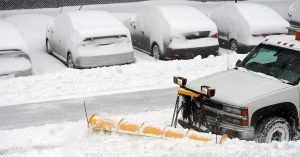
Drivers have a responsibility to use reasonable care and caution during snow conditions. In Massachusetts, numerous car accidents were reported across the state during last weekend’s Nor’easter. In Lowell, a woman in a wheelchair was killed by a snowplow crash.
When the snow starts to fall, get ready for winter travel conditions. While many Massachusetts residents are working remotely, most of us are still driving in some capacity and it is critical to prepare. You want to travel safely, slowly and defensively so no one is injured.
If you fail to exercise reasonable care during snow and ice conditions, you are more likely to slip, slide or crash on the road. You could cause yourself injury and need a new vehicle. But even more critical, you could cause someone else serious injury in a car accident. You could be held financially liable and have to pay a claim through your Massachusetts automobile insurance policy.
Stock your car up with emergency supplies. Include jumper cables, a snow shovel and scraper, a flashlight, extra windshield wiper fluid, antifreeze and a basic tool kit, with a screwdriver and other essentials. Also pack a warm blanket, bottled water and a snack, as well as a bright colored flag to wave should you need help. Another tip from the state of Massachusetts: have sand, road salt, a strip of carpet or kitty litter for traction should you need it.
Check your vehicle’s systems. Keep up with routine maintenance during the pandemic, even if you are not driving as often. On your own, you can inspect your tires, headlights and taillights to make sure they are working. You can also check your wiper blades and windshield washer fluid, heat and defrost.
Check weather alerts and traffic updates. Check both weather and traffic conditions before leaving home. Check weather conditions hour-by-hour so you are prepared.
Stay home. Avoid traveling during heavy snow conditions. If you must travel, use public transportation or delay your commute if possible.
Most New England residents do not re-arrange their travel plans for rain. Schools have “snow days” but not “rain days.” But be aware that any type of precipitation impacts visibility and safety on the road. One recent study looked at more than 125,000 fatal motor vehicle crashes between 2006 and 2011 and put a number on the risk for car accidents.
According to the study, published by the Bulletin of the American Meteorological Society, the risk rises based on the intensity of the precipitation. Light precipitation may increase the potential hazard by 27 percent. The risk more than doubles during heavier precipitation.
One of the researchers told the Washington Post that many drivers do not appreciate how the risk for crashes increases during even light rain.
Clear snow off your car. Plan an extra few minutes to remove snow from your vehicle’s roof, windshield and windows. You should be able to see in all directions from the driver’s seat.
In Massachusetts, police can cite drivers who neglect to clear snow because this interferes with safe travel. Drivers can receive a civil citation and have to pay a fine. However, the greater risk is that someone could be seriously injured by flyaway snow and ice or that the snow and ice could block someone’s view.
Drivers can prevent these accidents by simply doing a little more work before they drive. As a driver, you should know if you neglect to clear snow and ice and cause someone injury, you could be held financially responsible for the victim’s injuries and other damages. In Massachusetts, you could also be criminally charged with reckless or negligent operation of a motor vehicle. If you have been injured by a driver who neglected to remove snow and ice from their vehicle, you should report this fact to police investigating the car crash. You may also want to consult a Boston personal injury lawyer to learn your legal rights.
Slow down. Travel below the speed limit, even if others are traveling at the normal speed or speeding. Lowering your speed gives you more control over your vehicle. Remember, traffic is less predictable during snow storms and the road ahead may not be fully plowed. With less visibility, you may will need to watch more closely for pedestrians.
Charge cell phones. Keep your phone charged so you can use it during an emergency, but don’t use it. It is best to wait until you get home to talk, even if you are using an in-vehicle system or Bluetooth as allowed under the Massachusetts hands-free law. You can still cause a car accident if you are distracted and using a cell phone, even if you are following the law. You can still be held liable if you cause someone injury because you were not paying attention.
Travel safely near plow trucks. The state of Massachusetts advises drivers to stay at least 200 feet back when approaching a snow plow truck or other snow removal equipment. Do not attempt to pass a snow plow at any time. Drivers should be prepared for snow plows to make sudden stops at any time. Staying back gives you more time to slow down or stop, reducing the chance of a snow plow crash.
Snow plow drivers are likely to have poor visibility and you do not know how long they have been working without a break. What you can do is turn your vehicle lights on and wipe these clean from snow regularly. By taking these steps and giving snow plow drivers space, you are less likely to be involved in a collision with a snow plow or other vehicles also trying to dodge the snow plow.
Snow plows need as much room as possible in part because they must also watch for pedestrians.
Less than a week ago, there was a tragic accident in Lowell. The two pedestrians, one of whom was in a wheelchair, were struck at the corner of School and Cross streets. The 27-year-old woman in the wheelchair later died, according to NBC Boston. She was with a 39-year-old man and both were wearing safety jackets with reflectors, one witness at the scene told the news station. The accident was under investigation by the Middlesex District Attorney’s Office.
Because of the risk for plow truck accidents, we also caution drivers to avoid these vehicles in parking lots. Pedestrians have been hit, injured and killed by plow drivers in Massachusetts parking lots.
Free Legal Consultation – Boston Car Accident Attorneys
Breakstone, White & Gluck has a track record of successfully representing those injured by negligent drivers in car accidents, SUV crashes and truck collisions. We are experienced in investigating snow plow accidents which have injured pedestrians and other motorists, as well as other vehicle crashes in snow conditions.
Founded in 1992, Breakstone, White & Gluck represents clients across Massachusetts, including Boston, Cambridge, Somerville, Everett, Quincy, Milton, Lynn and Saugus.
If you have been injured in a car crash, it is in your best interest to learn your legal rights. For a free legal consultation, contact Breakstone, White & Gluck at 800-379-1244 or 617-723-7676 or use our contact form.
For Teen Drivers, Fewer Passengers is Safer

For safety, teens are not allowed to drive with their friends for the first six months of holding a driver’s license in Massachusetts.
Teen Driver Safety Week is Oct. 18-24, 2020. Breakstone, White & Gluck is sharing articles to encourage parents and teens to collaborate and discuss safe driving decisions.
In Massachusetts, drivers who are at least 16 ½ are eligible to receive their driver’s license after a six-month permit period. Because Massachusetts has a Junior Operator Law, teens do not immediately assume full driving privileges. There are restrictions to help reduce the risk of teen car accidents, including one on passengers.
For the first six months, Massachusetts junior operators are not allowed to travel with friends and others under age 18, unless accompanied by another driver who is at least 21 years old and meets other requirements mentioned in statute below. There is an exemption for siblings and family members. The passenger restriction is a critical part of the law, giving teens more time to learn road skills without the distraction of friends.
M.G.L. c.90 § 8 states, “No person holding a junior operator’s license shall operate a motor vehicle during the first 6 months of licensure while a person under 18 years of age, other than the operator or an immediate family member of the operator, is present in the vehicle unless also accompanied by another person, duly licensed by his state of residence, who is at least 21 years of age with at least 1 year of driving experience and who is occupying a seat beside the driver.”
The passenger restriction should be taken seriously. As we discuss below, the distractions of carrying other teens combined with driver inexperience, can contribute to the risk for car accidents resulting in catastrophic injuries such as brain injuries and paralysis, and death. Car crashes are the leading cause of death among teens, according to the Centers for Disease Control and Prevention (CDC). The junior operator law attempts to give teens more time for practice.
If stopped for carrying unlawful passengers, teens can lose their license for 60 days for the first offense. For the second offense, drivers face a 180-day license suspension and must attend driver attitudinal retraining. There is a one-year license suspension and driver attitudinal retraining for subsequent offenses.
More Passengers, More Risk for Crashes
Research has shown teens need the extra time driving without their friends.
Compared to no passengers, a 16- or 17-year-old’s risk for death per mile increases 44 percent when they carry just one passenger under the age of 21, according to the AAA Foundation for Road Safety. The risk doubles when a teen driver carries two passengers younger than 21. The death rate quadruples when there are three or more passengers.
The older the passenger, the less risk for a car accident. There is a 62 percent decrease for a crash when a passenger age 35 or older is aboard. Take this statistic as motivation to give your teens the keys as you ride along. If you develop a good routine with them, you can help them build a full range of driving skills.
As they become more skilled, reward them by letting them drive to new places – a special lunch spot or a scenic view. This helps them build skills, learn responsibility and find some enjoyment from driving. With more time, they can practice fundamentals, such as how to turn through that intersection near your home, how to check for cyclists and how to stop for pedestrians at crosswalks. When teens drive with their friends, they are less likely to give these things their full attention.
Come Up With a Driving Plan for Your Teen
The takeaway is come up with a plan for your family. If your teen just earned their Massachusetts junior operator license, the state says they are not allowed to drive with friends under 18 for the first few months but that they can drive with their siblings right away. Remember, the law is a guide. This is your choice to make based on what your teen and their siblings are ready for. Your goal is to help your teen steer clear of car accidents. Think about each situation before you say yes.
When your teen is allowed to start driving passengers under 18, take another pause. The data still shows fewer passengers is safer.
You may want to start slow. Allow your teen to drive with just one friend. Choose a friend who is responsible, trustworthy and has a parent whom you know well and shares your views on raising safe and responsible teen drivers. That parent should also share your views on open communication. If something should happen and your teen should find themselves at risk, you want your teen and their friend to both feel they can call for a ride.
Free Legal Consultation – Boston Car Accident Lawyers
Breakstone, White & Gluck has decades of experience representing by negligent driving in Boston, Cambridge, Quincy and across Massachusetts. Through our Project KidSafe campaign, we work to protect children and families. Each year, we write about National Teen Driver Safety Week to encourage parents and teens to talk about safety on the roads.
If you have been injured and want to consult a Boston car accident lawyer, you can visit our website or contact our attorneys at 800-379-1244 or 617-723-7676 for a free legal consultation. You can also use our contact form.
National Teen Driver Safety Week Offers Safety Reminders for Massachusetts Families
 Motor vehicle crashes are the leading cause of death for teens. Each year, National Teen Driver Safety Week highlights safety insights for families and teens. This year, the event runs from October 18-24th. We encourage you to follow the National Highway Traffic Safety Administration and Teen Driver Source for more information. Teen Driver Source is operated by the Center for Injury Research and Prevention at Children’s Hospital of Philadephia, which offers Facebook and Twitter feeds.
Motor vehicle crashes are the leading cause of death for teens. Each year, National Teen Driver Safety Week highlights safety insights for families and teens. This year, the event runs from October 18-24th. We encourage you to follow the National Highway Traffic Safety Administration and Teen Driver Source for more information. Teen Driver Source is operated by the Center for Injury Research and Prevention at Children’s Hospital of Philadephia, which offers Facebook and Twitter feeds.
According to the National Highway Traffic Safety Administration, the greatest dangers teen drivers face are: alcohol consumption, inconsistent or no seat belt use, distracted driving, speeding and driving with passengers in the vehicle. This year, COVID-19 has introduced a new concern. Teens are driving far less and risk losing core skills. This is where National Teen Driver Safety Week comes in as an important resource this year.
Driving Safety Contract. If you follow Teen Driver Safety Week, you may learn about teen driver contracts. You can also print this parent-teen driving contract from the Centers for Disease Control and Prevention (CDC). Make your own edits and ask your teen to sign as a condition for using your vehicle. Give your teen a copy of the document to file away and review. This is a good way to lay out expectations for your teens and what will happen if they violate the agreement.
Make Sure Teens Get Enough Driving Time. If teens are not driving as much during COVID-19, they risk falling behind on fundamental skills. To prevent this, encourage your teen to drive regularly. When you go out with your teen, split the driving responsibilities so you know they are logging at least some time behind the wheel and you can monitor their progress.
Hold back judgment and sharp comments if you see some of their skills have regressed. This may happen. Just help them get practice in where they need it. Take advantage of empty parking lots and slower times of the week. You can get them back on track.
Drive Around Town With Your Teen. When you can, walk and drive around your community with your teen, including during the morning and afternoon commutes. This gives your teen a preview of what may come when they pull out of the driveway alone. You may see more pedestrians and cyclists in areas. You may see parking changes and restaurants offering sidewalk service. Share observation with your teens and try to make helpful suggestions to help them drive safely and avoid car accidents.
Stress the Importance of Slowing Down. Speed is a factor in nearly 30 percent of all fatal crashes involving teen drivers, according to AAA. Teens often have a heavy foot on the gas pedal and this only changes as they gain experience. For now, if teens can simply slow down, they can significantly reduce their risk of a collision.
Start by helping your teen recognize speed limits because they are not always posted right in front of them. While they should have learned this in driver’s ed, new drivers can use a reminder from time to time. Massachusetts sets a default speed limit of 30 mph in thickly settled and business areas, unless posted otherwise or an individual community has opted to lower the speed to 25 mph. School zones and work zones are 20 mph.
Encourage your teen to travel at or below the speed limit, especially in residential neighborhoods. By doing so, they reduce their risk of causing a car accident due to inexperience in the first few months or year of driving. They reduce their chance of causing themselves or someone else serious injuries and all the emotions and stress.
Reduce Distractions. Slowing down is the most effective tool for safe driving. It’s also important to reduce distractions. This means setting aside cell phones and limiting conversation with passengers in the vehicle. Sure, your teen is going to engage in discussion with others in the car. But try to make conversation lighter and focus more on observation, such as, “I see cars backing up at the traffic light ahead” or “there is an ambulance coming.” Save heavy discussion for before or after the drive.
Safety Steps Near Pedestrians and Cyclists. Teens may struggle to drive near pedestrians and cyclists. Every few weeks, drive through school zones and busy areas with your teen again, just as a refresher. Show them how you stop at crosswalks for pedestrians and leave room in anticipation of pedestrians. Instead of chatting at traffic lights, use this time to show your teen how to check for cyclists. More and more people have been cycling over the past decade in Massachusetts. This likely increased during COVID-19 and will likely continue. The reality is cars are not the only vehicle on the roads. Cyclists have the right to travel in the road too. You can really help your teen by teaching them to look for cyclists.
Buckling Up. Teens and young adults have the lowest rates of seat belt use, according to the CDC. Almost half of all drivers age 15-20 who died in car crashes were not wearing seatbelts in 2017, according to the CDC. During COVID-19, your teen may go long periods of time without driving or traveling in the car. Remind your teen – and all your family members – to always buckle up.
Boston and Cambridge Car Accident Lawyers – Breakstone, White & Gluck
At Breakstone, White & Gluck, our Boston car accident lawyers have over 100 years combined experience representing those injured by negligent driving. If you have been injured in a car accident and someone else was responsible, learn your legal rights. For a free legal consultation, contact our attorneys at 800-379-1244 or 617-723-7676 or use our contact form.


